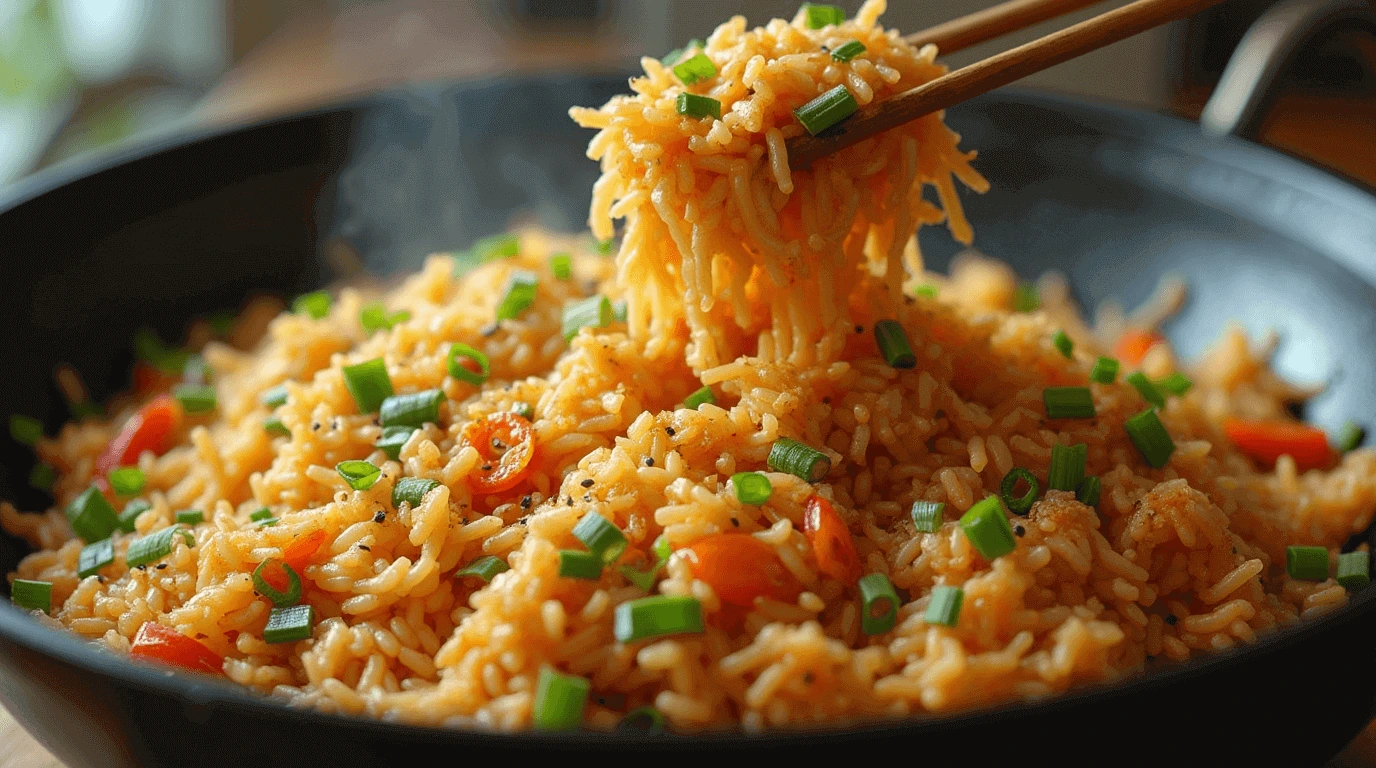Got leftover rice sitting in your fridge? Don’t toss it! That day-old rice is the secret to making incredible fried rice crispy, flavorful, and better than takeout. Not only does it help reduce food waste, but it also transforms a simple ingredient into a delicious, globally loved dish. Let’s turn those leftovers into something amazing!
Key Takeaways
- Day-old rice creates superior texture for fried rice compared to fresh rice.
- Repurpose day-old rice to reduce food waste and save money.
- Leftover rice recipes can include global twists like pineapple or kimchi.
- Simple techniques transform plain rice into golden, savory fried rice.
- Learn how to leftover rice for fried rice with step-by-step guidance.
Table of contents
Why Leftover Rice Makes the Best Fried Rice
Professional chefs choose day-old rice for fried rice because it’s perfect. They know how rice changes as it cools. This section explains the science and benefits.
The Science Behind Day-Old Rice
Cooked rice changes when stored. It becomes firmer and less sticky. This makes day-old rice great for crispy fried rice.
Fresh rice doesn’t have this texture. It tends to clump instead.
Moisture Content and Texture Considerations
The moisture in leftover rice affects its texture. Too much makes it soggy. Here’s how to fix it:
- For too moist rice: Spread it on a plate to dry at room temperature.
- For too dry rice: Sprinkle a few drops of water and toss gently.
Flavor Absorption Benefits
Day-old rice absorbs sauces and spices well. Soy sauce, sesame oil, and garlic get into each grain. Fresh rice doesn’t soak up flavors as well. That’s why day-old rice is the best for bold dishes.
Essential Ingredients for Perfect Fried Rice
Turning leftover rice into a dish like restaurant-quality fried rice starts with the right ingredients. Fried rice ingredients like oil, aromatics, and seasonings are key for texture and flavor. These essential components for fried rice make every grain crispy and savory.

- Oils: Use high-smoke-point oils like peanut or vegetable oil to avoid burning. Sesame oil adds a nutty depth when drizzled at the end.
- Aromatics: Minced garlic, ginger, and scallions form the base. Toast garlic briefly before adding rice for deeper flavor.
- Seasonings: Soy sauce, oyster sauce, or fish sauce balance saltiness and umami. Tamari works as a gluten-free substitute.
Proteins like diced chicken, shrimp, or tofu add heartiness. Vegetables such as peas, carrots, and frozen edamame offer freshness. For how to leftover rice for fried rice success, prep ingredients ahead: chop veggies, marinate meats, and measure sauces. A must-have pantry list includes: oil, soy sauce, eggs (optional), and aromatics. Optional upgrades like XO sauce or chili paste can elevate dishes but aren’t required. Substitute uncommon items: coconut aminos for soy sauce or cornstarch to thicken sauces. Proper prep turns leftovers into a vibrant meal in minutes.
Preparing Your Leftover Rice for Frying
Learning how to leftover rice for fried rice begins with the right prep. These steps help each grain cook evenly and soak up flavors well. Follow these tips to avoid soggy or uneven results.
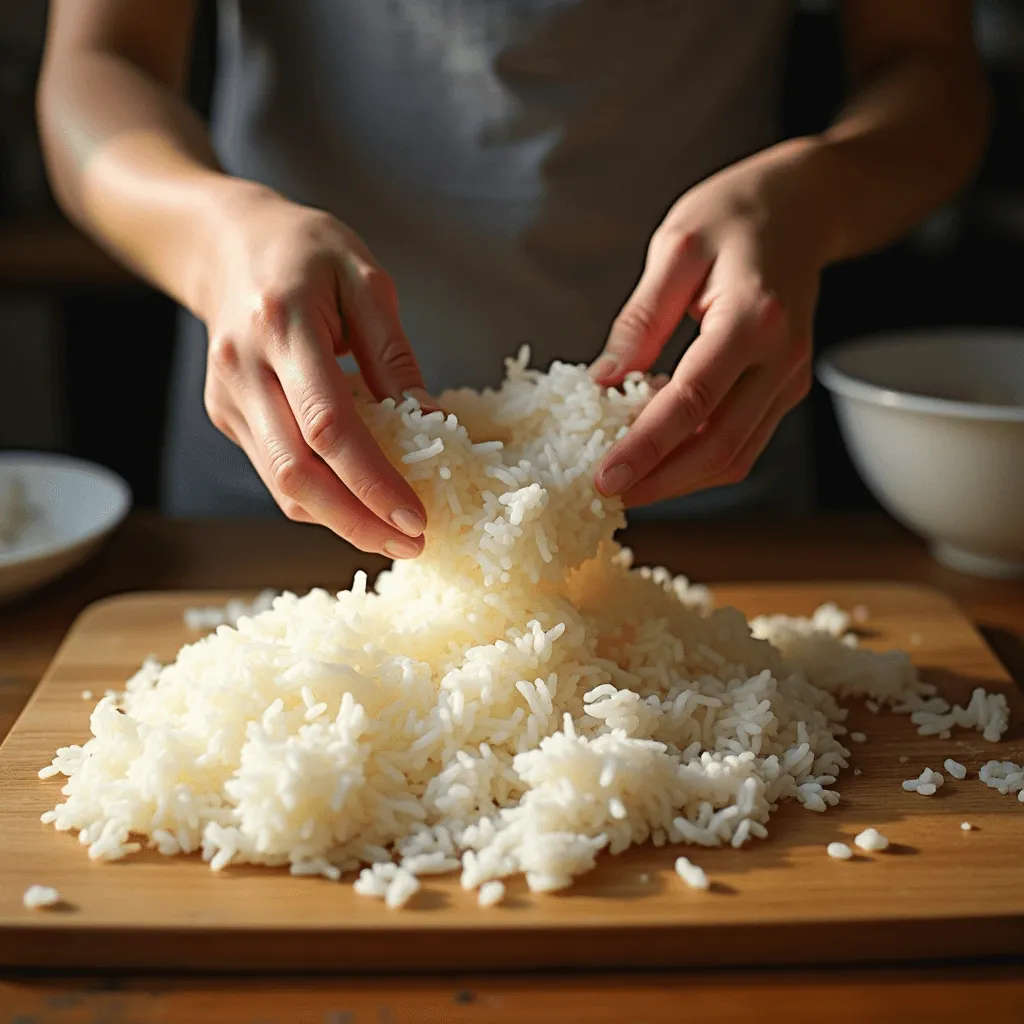
Breaking Up Clumps and Chunks
Day-old rice often sticks together. Here’s how to separate the grains:
- Hand separation: Rub rice between fingers to break apart sticky sections.
- Fork fluffing: Gently pierce and lift rice with a fork until loose.
- No rinse: Avoid washing rice—moisture retention ruins texture.
Proper Rice-to-Ingredient Ratio
Balance ingredients to avoid sogginess or blandness. Use this guide for consistent results:
| Rice (cups) | Protein (cups) | Vegetables (cups) | Sauce (tbsp) |
|---|---|---|---|
| 2 | 1 | 1 | 3 |
Adjust ratios based on portion size while keeping this 2:1:1:0.5 base ratio.
Optional Pre-Seasoning Techniques
Enhance flavor penetration with these methods before frying:
- Oil coating: Toss rice with 1 tsp oil to prevent sticking.
- Umami boost:
- Light soy sauce mix-ins for base flavor.
These rice preparation techniques ensure your fried rice starts strong. Perfectly prepped rice forms the foundation for every recipe in this guide.
How to Leftover Rice for Fried Rice: Step-by-Step Process
Learning how to leftover rice for fried rice is all about the right tools and techniques. First, pick your cooking pot. Then, adjust your methods to fit your gear.
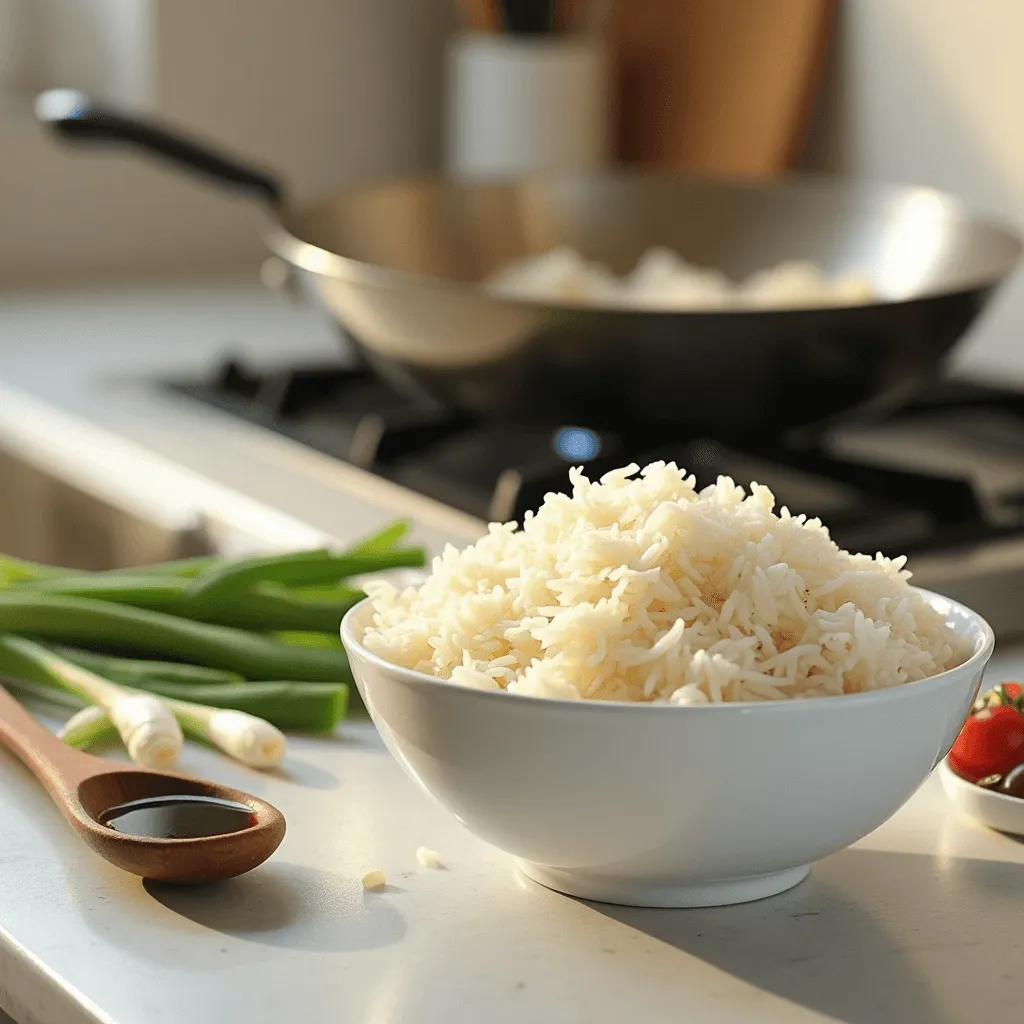
Wok vs. Frying Pan Techniques
| Wok Techniques | Frying Pan Tips |
|---|---|
| Use high heat on gas stoves for even searing. Stir constantly with a spatula. | Choose a heavy-bottomed pan. Cook in batches to avoid overcrowding. |
| Curved shape improves ingredient tossing. | Flat surface requires more manual stirring. |
Heat Management for Optimal Results
- Preheat the pan until oil shimmers but doesn’t smoke.
- Add ingredients in this order: aromatics → proteins → rice → sauces.
- Reduce heat briefly when adding delicate ingredients like eggs or vegetables.
The Art of Tossing and Stirring
- Use a wide spatula to lift rice from the bottom, preventing burning.
- Stir vigorously but not violently to preserve rice integrity.
- Add sauces last and mix gently to avoid clumping.
Keep practicing these wok techniques and heat management for fried rice until the rice is golden. Adjust your timing based on your stove’s heat.
Classic Chinese-Style Fried Rice Recipe
Learning classic Chinese fried rice begins with the right ingredients and method. This traditional fried rice recipe calls for day-old rice for the best texture. This is a key tip from how to use leftover rice for fried rice. Follow these steps to make restaurant-quality fried rice at home.
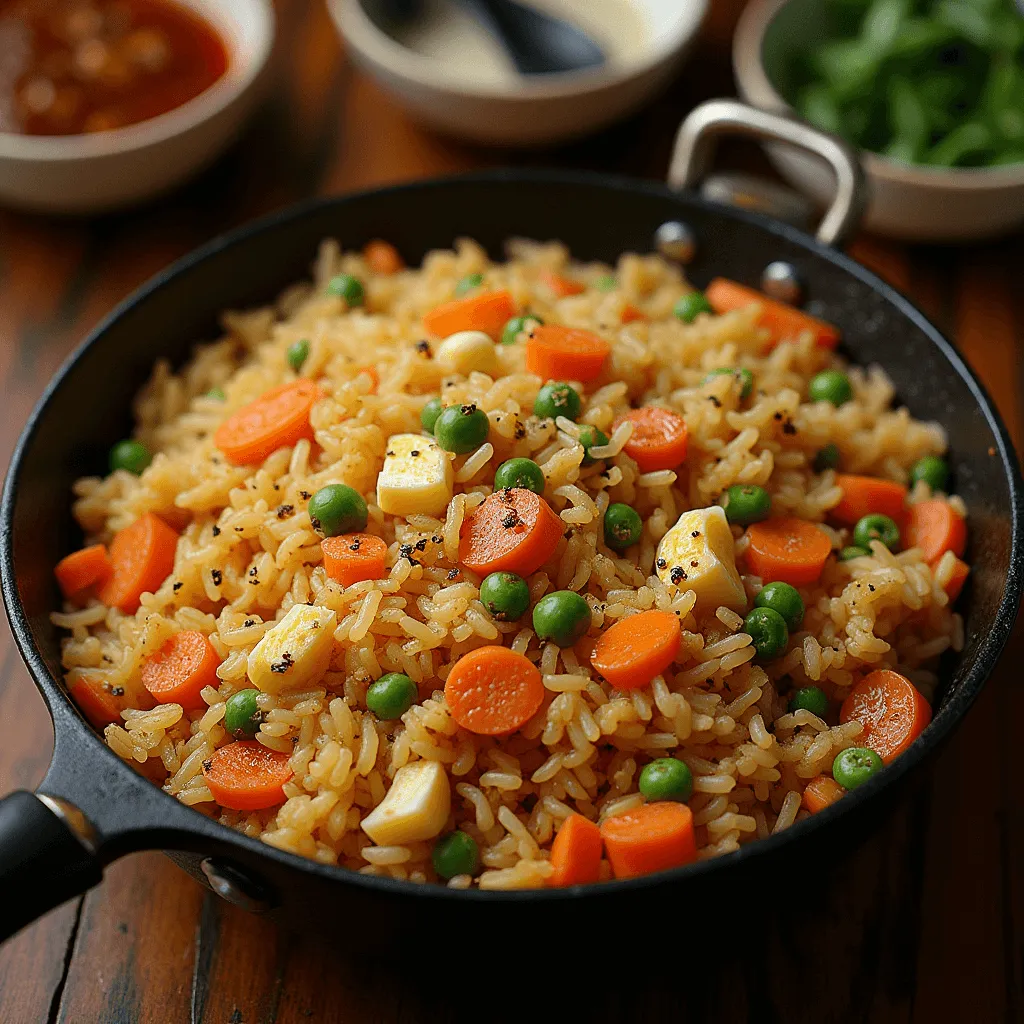
- Combine 2 cups cooked rice, 2 beaten eggs, and 2 tbsp soy sauce. Mix well.
- Heat 2 tbsp vegetable oil in a hot wok. Pour in eggs, scramble until set, then remove.
- Add 1 tbsp oyster sauce, 1/2 cup diced veggies (carrots, peas, onions), and 3 garlic cloves (minced). Stir-fry 2 minutes.
- Return eggs to wok. Add rice, 1 tbsp sesame oil, and 1 tsp black pepper. Toss constantly over high heat for 5 minutes.
- Season with 1 tbsp light soy sauce and 1/2 tsp sugar. Garnish with green onions and sesame seeds.
Pro tip: To get wok hei, use a well-seasoned wok on high heat. Don’t overcrowd the pan—cook in batches if needed. Serve with chili oil or pickled vegetables for an authentic touch. This classic Chinese fried rice respects traditional methods but is easy to make at home. Enjoy it with ginger tea or stir-fried bok choy for a full meal.
- Use short-grain jasmine or Calrose rice for best results
- Never rinse cooked rice before frying
- Add sesame oil last to preserve its aroma
Global Fried Rice Variations Using Leftover Rice
Turn leftover rice into a world of flavors with global fried rice variations. From sweet tropical tastes to spicy flavors, these international rice dishes show how different cultures make leftovers into famous meals.
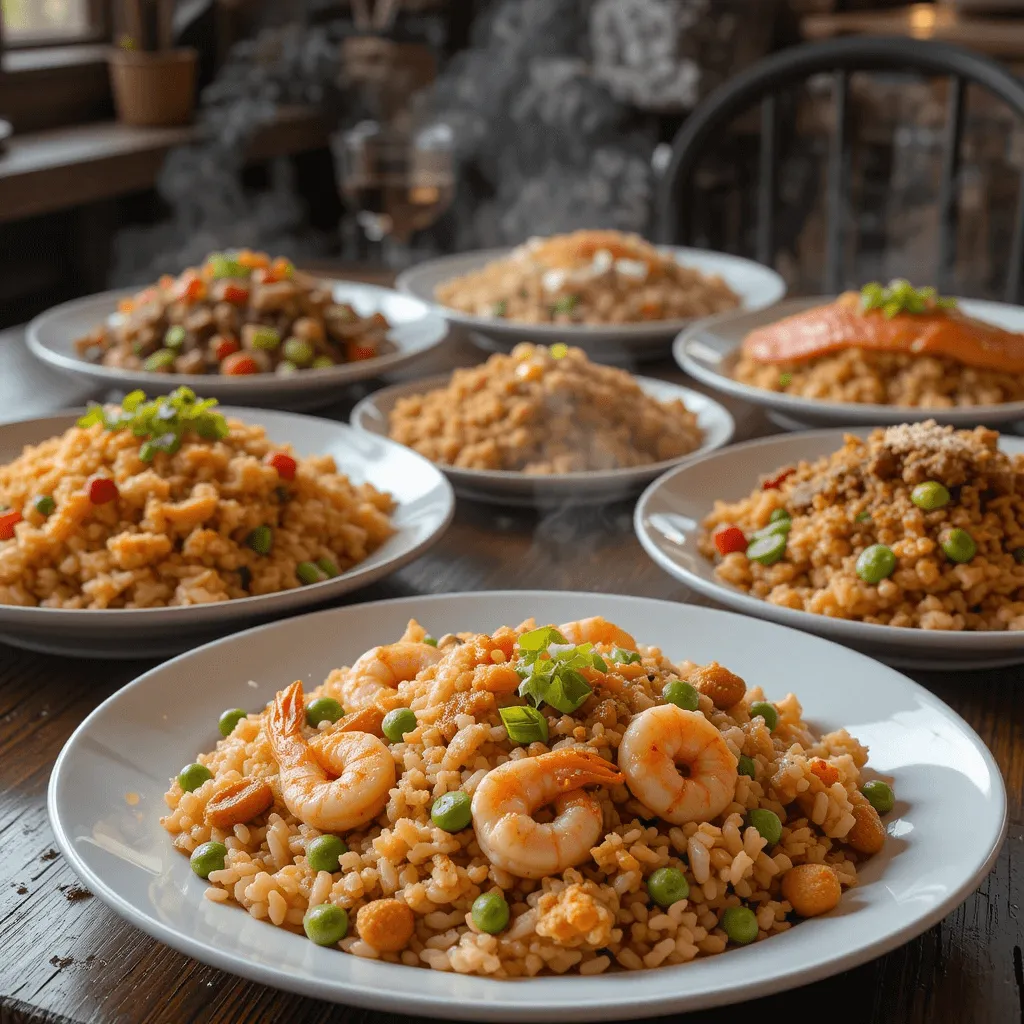
Thai-Inspired Pineapple Fried Rice
This how to leftover rice for fried rice recipe mixes crisp pineapple, fish sauce, and red curry powder. Cook rice with scrambled egg and roasted peanuts. Then, serve it in a hollowed pineapple for a colorful dish.
Korean Kimchi Fried Rice
Kimchi’s spicy kick meets gochujang paste and marinated beef. Mix it with leftover rice in a hot pan. Top with a runny fried egg and sesame seeds for a fiery meal.
Japanese Yakimeshi
Japanese-style fried rice uses high heat to make ingredients like soy sauce, green onions, and kewpie mayonnaise golden. The trick? A seasoned wok and quick stir-fry for fluffy rice.
Indonesian Nasi Goreng
Indonesia’s national dish combines caramelized shrimp paste, kecap manis (sweet soy sauce), and crispy shallots. Add a fried egg and lime wedges for a international rice dish with sweet, salty, and smoky tastes.
Try these global twists to make your leftovers a journey around the world. Each dish shows leftover rice is a canvas for your creativity.
Protein Options to Elevate Your Leftover Rice Dish
Learn how to make leftover rice into a tasty fried rice dish. Choose the right protein to turn leftovers into a satisfying meal. Options like lap cheong, shrimp, or tofu add flavor and variety.
Meat and Poultry Additions
Savory meats add bold flavors to fried rice. Here are some great choices:
- Lap cheong or char siu pork: Slice thinly and sauté first for smoky depth
- Chicken or beef: Cut into ½-inch cubes. Marinate in soy sauce and ginger for 15 minutes before cooking
- Ground pork or turkey: Brown separately to avoid sogginess
Adding peas or carrots brings color and texture.
Seafood Combinations
Seafood is quick to cook and adds a special touch:
- Shrimp: Cook 2-3 minutes until pink
- Squid rings: Sauté 1-2 minutes to stay tender
- Scallops: Sear quickly for a golden crust
Season with ginger and rice wine vinegar for a bright taste.
Vegetarian and Vegan Alternatives
Plant-based proteins like tofu and legumes are great:
- Firm tofu: Press to remove moisture. Cube and stir-fry until golden
- Tempeh: Marinate in soy sauce and lime juice for 30 minutes
- Edamame or chickpeas: Add toward the end to retain crunch
Use soy sauce and sesame oil for depth. Roasted mushrooms add an earthy flavor.
Common Mistakes to Avoid When Making Fried Rice
Learning how to leftover rice for fried rice means avoiding common mistakes. Fried rice mistakes like using fresh rice or adding too much to the pan can mess up the dish. Here’s how to avoid and fix these problems:
- Using Fresh Rice: Fresh rice clumps and releases moisture, making it mushy. Always refrigerate rice overnight to dry it out first.
- Overcrowding the Pan: Too much rice or ingredients steams the dish instead of frying. Cook in small batches for even browning.
- Low Heat: Low heat makes rice absorb oil without getting crispy. Use high heat and a well-seasoned wok or cast-iron skillet.
- Adding Sauce Too Early: Adding soy sauce or seasoning too soon dilutes flavor. Sprinkle dry seasonings first, then mix in liquid sauces at the end.
Trubleshooting fried rice problems also means staying safe. Always refrigerate leftover rice within two hours to prevent Bacillus cereus growth. If rice smells off or has an unusual texture, throw it away. For the best results, check if the rice is dry before cooking. Also, toss ingredients quickly to avoid overcooking.
Transforming Plain Leftover Rice into Specialty Fried Rice Dishes
Turning how to leftover rice for fried rice into specialty fried rice needs bold creativity. Here are tips for adding global-inspired flavors:
Herb and Spice Infusions
For depth, toss in fresh herbs like basil or cilantro at the end. Toast spices like cumin or turmeric before mixing. Try:
- Lemongrass and kaffir lime leaf for Thai-inspired dishes
- Smoked paprika for a smoky kick
- Za’atar blend for Mediterranean flair
Creative Mix-ins for Unique Flavors
Balance textures and tastes with:
- Pickled carrots or daikon for tangy crunch
- Toasted cashews or peanuts
- Preserved lemons (Middle Eastern twist)
- Candied ginger or mango for sweet contrasts
Sauce Combinations for Different Tastes
Build layers with these flavor enhancements for rice blends:
| Sauce Type | Key Ingredients | Flavor Profile |
|---|---|---|
| Gochujang Butter | Korean chili paste + butter | Sweet-spicy, creamy |
| Tamarind Sauce | Tamarind paste, fish sauce | Umami-sweet tartness |
| Coconut Curry | Coconut milk, red curry paste | Creamy and aromatic |
| XO Sauce Blend | Dried chilies, shrimp paste | Deeply savory |
Pair these elements to craft dishes like coconut curry fried rice with cashews or gochujang butter-topped kimchi variations. Experiment but balance bold flavors with base ingredients.
Storing and Reheating Your Fried Rice Creations
Storing fried rice right keeps it fresh and safe. Cool it down first, then put it in airtight containers. Glass or plastic containers from brands like Pyrex or Rubbermaid work best. Keep it in the fridge for up to 4 days or freeze for 3 months.
Don’t let fried rice sit at room temperature for more than 2 hours. This helps prevent bacteria from growing.
Reheating fried rice is key. For the microwave, put rice in a safe bowl, cover with a damp paper towel. Heat in 30-second bursts, stirring each time. On the stovetop, add a bit of water or soy sauce to a pan. Stir-fry over medium heat until it’s hot.
For big batches, spread rice in a baking dish. Bake at 350°F (175°C) for 10–15 minutes.
- Use a food thermometer to ensure reheated rice reaches 165°F (74°C).
- Add a teaspoon of water to revive dry rice while microwaving.
Get creative with leftover fried rice. Turn it into congee by mixing with broth. Make crispy rice cakes with egg and breadcrumbs. Or add it to soups.
These ideas make leftover rice into new meals. If you don’t eat it in 4 days, or if it smells bad, throw it away.
Conclusion: Reducing Food Waste One Delicious Fried Rice at a Time
Turning leftover rice into fried rice is more than a trick. It’s a way to help the planet. By using leftover rice, we reduce waste and make tasty dishes like Thai pineapple or Korean kimchi. This method makes old rice better, turning it into a delicious meal.
Recipes from around the world show how versatile fried rice is. You can add meat, veggies, or herbs to make it your own. This approach not only saves money but also helps the environment. It shows that cooking in a way that’s good for the planet doesn’t have to be hard.
Try new ways to make fried rice with leftovers and share your creations online. Add leftover veggies, proteins, or herbs to make unique dishes. Every dish made from scraps helps reduce waste and brings new flavors to your table. By doing this, you’re part of a bigger effort to eat smart and protect our planet. Let’s make every meal a celebration of taste and sustainability.
FAQ
Why should I use leftover rice for fried rice instead of freshly cooked rice?
Leftover rice is drier and less sticky than fresh rice. This makes it perfect for fried rice. The grains separate well and soak up flavors better.
How long can I store leftover rice before it becomes unsafe to eat?
Leftover rice stays safe in the fridge for 3-4 days. Cool it fast and store it in a sealed container. This keeps it fresh and stops bacteria growth.
What are some essential ingredients for making delicious fried rice?
For tasty fried rice, you need oils like sesame and vegetable. Add aromatics like garlic, ginger, and scallions. Use proteins like chicken, shrimp, or tofu, and veggies like peas and carrots. Season with soy sauce and oyster sauce for flavor.
Can I use frozen leftover rice for fried rice?
Yes, you can use frozen rice for fried rice. Thaw it fully and break up any clumps. This ensures it fries evenly and tastes great.
How can I prevent my fried rice from becoming soggy?
To avoid soggy fried rice, use cold rice from the fridge. Don’t overcrowd the pan and cook at high heat. Add sauces carefully to keep it dry.
Should I rinse my leftover rice before frying it?
Rinsing leftover rice isn’t needed. It can lose flavor. Instead, use your hands or a fork to fluff the rice before frying.
What types of proteins work best with fried rice?
Great proteins for fried rice are chicken, pork, shrimp, and beef. For veggie lovers, tofu, tempeh, or legumes are good. Marinate them for extra taste.
Can I include vegetables in my fried rice? If so, which ones work well?
Yes, you can add veggies like peas, carrots, bell peppers, and onions. Cut them small for even cooking. Add them at the right time.
How can I elevate my fried rice with unique flavors?
Try adding fresh herbs like basil or cilantro, or spices like five-spice. You can also mix in pickled veggies or nuts for extra flavor and texture.
Is there a specific temperature I should use when cooking fried rice?
High heat is key for fried rice. It gives the dish a great flavor and prevents it from steaming. Keep the heat high while tossing the rice.

